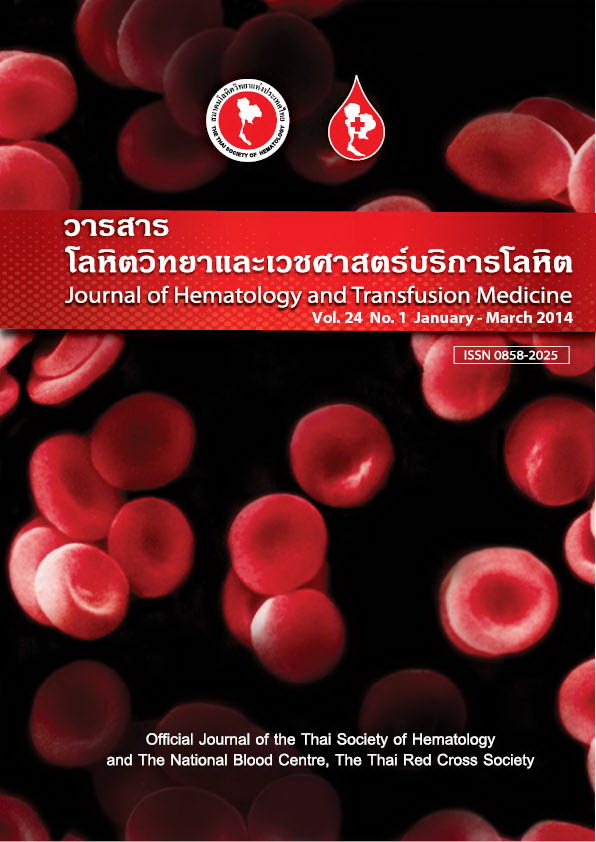Outcome of Autologous Transplantation for Relapsed/Refractory Diffuse Large B-cell Lymphoma in Rituximab Era
Keywords:
Autologous stem cell transplantation, Rituximab, Diffuse large B-cell lymphoma, การปลูกถ่ายเซลล์ต้นกำเนิดเม็ดเลือด, มะเร็งต่อมน้ำเหลืองAbstract
Background: Autologous stem cell transplantation (ASCT) has been a standard treatment for chemo-sensitive relapsed/refractory diffuse large B-cell lymphoma (DLBCL) since pre-rituximab era. Many studies showed prior Rituximab (R) as frontline treatment was an adverse prognostic factor of post ASCT outcome. We studied survival outcome according to the R exposure in relapsed/refractory DLBCL patients who underwent ASCT. Materials and Methods: This is a single-center retrospective study. Thirty-nine relapsed/refractory DLBCL patients who underwent ASCT were analyzed. All patients received cyclophosphamide, BCNU and etoposide (CBV) as conditioning regimen followed by peripheral blood stem cells infusion. Results: The median age was 41 years (range, 17-56). Male: female ratio was 1.3:1. Thirty-nine patients were categorized into 3 groups; 15 patients in R-naïve group (R-/R-), 12 patients in R-salvage with no prior R group (R-/R+) and 12 patients in prior R as first-line treatment group (R+/R±). The 3-year progression free survival (PFS) of R-/R- vs R-/R+ vs R+/R± group was 33.3% vs 50% vs 51.9%. The 3-year overall survival (OS) was 46.7% vs 55.6% vs 51.4%, respectively. The complete remission (CR) before ASCT was the only significant positive factor for PFS. (HR = 0.373, 95%CI: 0.142-0.979, p = 0.045). Conclusions: Our study showed prior R before ASCT did not yield poorer outcome, and showed trend towards improved PFS, compared with R-naïve group. Patients who achieved CR before ASCT were significantly associated with better outcome post ASCT. Our results need to be confirmed in a large prospective study.



